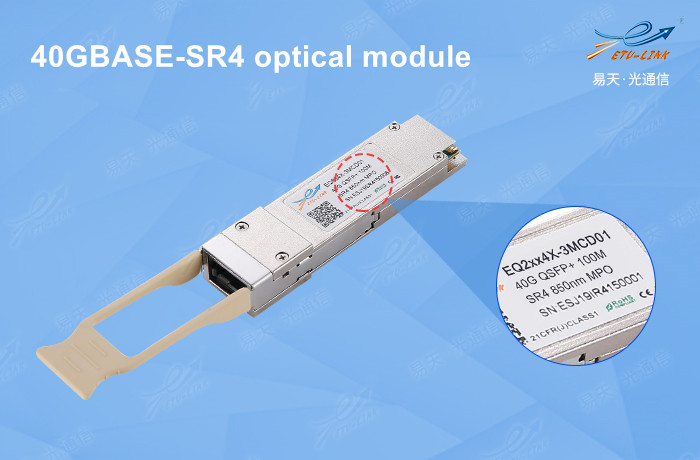
The difference between long-distance optical modules and short-distance optical modules
In the previous blogs, we have already introduced the long-distance optical module in detail. Today ETU-LINK will take you through the differences between long-distance optical modules and short-distance optical modules.
With the rapid development of optical communication, people's speed requirements for telecommunications and data communication networks are constantly increasing, and transmission distance is also a major parameter of concern. Long distance optical modules address the needs of long-distance transmission, such as urban area network construction and synchronous fiber optic networks. Short distance optical modules are widely used in other indoor applications such as data centers, computer room servers, HDNI optical terminals, and SDI optical terminals. This is the difference in application.
The transmission distance of long-distance dual fiber optical modules is generally 40KM or above, with a wavelength of 1550nm and a connecting fiber diameter of 9/125 μ M's single mode optical fiber for data transmission. The transmission distance of short distance optical modules is generally 2 kilometers or less, with wavelengths of 850nm&1310nm and a connecting fiber diameter of 50/125 μ M or 62.5/125 μ M's multimode optical fiber for data transmission.
|
|
Long distance dual fiber optical module |
Short distance dual fiber optical module |
|
Distance |
≥40KM |
≤2KM |
|
Wavelength(nm) |
1550nm |
850nm&1310nm |
|
Fiber diameter |
9/125μm |
50/125μm |
|
Fiber type |
Single mode fiber |
Multimode fiber |
|
application |
Construction of metropolitan area networks, synchronous fiber optic networks, synchronous data systems, fiber optic channels, etc |
Other indoor applications such as data centers, server rooms, HDNI optical terminals, and SDI optical terminals |
In practical applications, long-distance optical modules are often unable to reach their maximum transmission distance due to a certain degree of dispersion of optical signals during fiber transmission. In addition, the requirements for the receiving power range of long-distance optical modules are strict, and if the laser power exceeds the sensitivity range of the receiver, it is easy to cause optical module failures.
The short distance optical module uses refractive transmission, which cannot achieve the transmission of two wavelengths in different directions on the same fiber. It can only send data signals of one wavelength and can only operate on multimode fibers, and cannot be used in conjunction with a multiplexer. The 40GBASE-SR4 optical module is a short distance optical module used in conjunction with multimode fiber. The link length on OM3 multimode fiber is 100 meters, and on OM4 multimode fiber, the link length is 150 meters.
The wavelength is 850nm, usually using a 12 core MPO/MTP interface, packaged as QSFP+, with four multimode fiber channels transmitting serialized data at a rate of 10G per channel for 40G short distance transmission.

The above is all the content about the differences between long-distance optical modules and short distance optical modules by ETU-LINK. For more information, welcome to visit our website.
Categories
New Blog
Tags
New Products
© Copyright: 2024 ETU-Link Technology CO ., LTD All Rights Reserved.

IPv6 network supported
Friendly Links:
易天官网